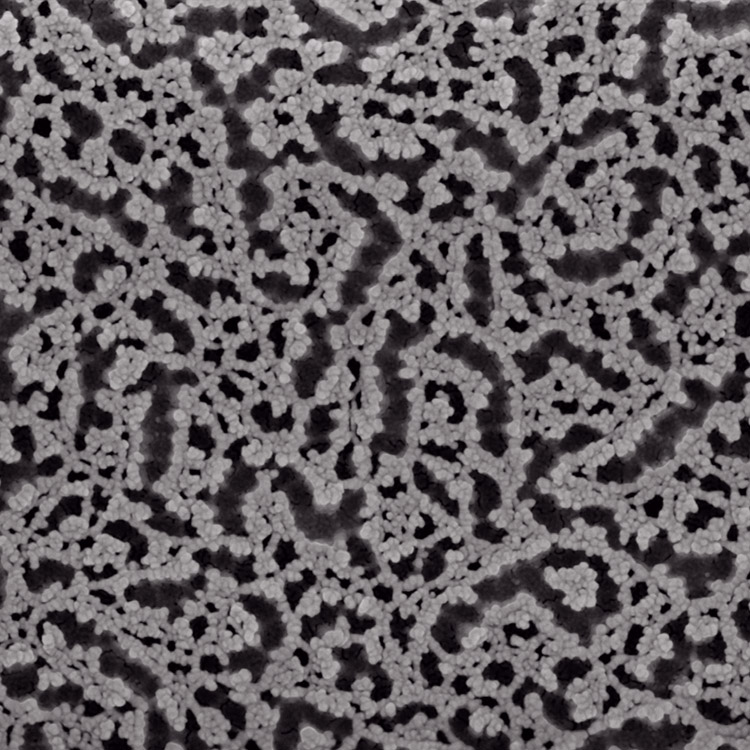UV-protective layers
A number of organic compounds exhibit interesting spectral absorption characteristics especially in the ultraviolet region. That property can be applied to protect polymer substrates, i.e. polycarbonate, from damaging radiation. For polycarbonate a suitable protective layer needs an absorption edge near 400 nm to avoid a later delamination of the coating. Such a protective function can be provided by typical UV absorbers like Tinuvin™ 360 and Tinuvin™ 1577, but also by other organic compounds like α-NPD. Especially combinations of different materials have shown beneficial properties. The organic compounds can be deposited as thin films by thermal evaporation. For practical application and higher durability the organic absorbers will be embed in an inorganic matrix by co-evaporation.
Antireflective structures AR-plas®
A basic requirement for many optical applications is the reduction of the Fresnel-reflections. Structures with subwavelength size can provide antireflection properties in broad spectral range. They exhibit a gradually increasing effective index from substrate side to the ambient medium (air) and can be described as a low-index effective layers. A convenient method to generate antireflective nanostructures on a polymer surface is plasma etching. This technique was successfully applied also to evaporated organic films. Organic layers with plasmaetched nanostructures are especially promising to provide antireflective properties to strongly curved glass lenses. An improved effect can be achieved by combining suitable interference layer stacks with plasma-etched organic top-layers.
